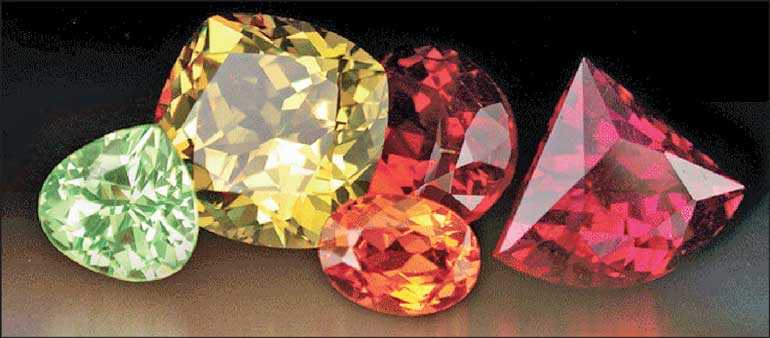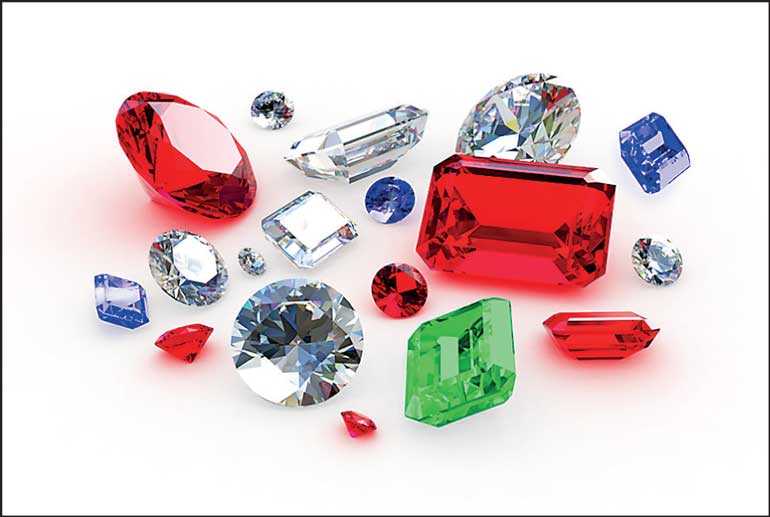Monday Apr 21, 2025
Monday Apr 21, 2025
Friday, 30 August 2019 00:00 - - {{hitsCtrl.values.hits}}


The 29th edition of the FACETS International Gem and Jewellery Exhibition beginning on 29 August and ending on 1 September, will feature a number of lapidary stalls for gem enthusiasts to learn how to evaluate and assess the Four Cs or for customer to discern to the quality of the gems they purchase. The exhibition will boast a wide variety of gems, and visitors will have plenty of opportunities to put the knowledge imparted in this article to good use. So for those of you planning to visit the exhibition, here are a few pointers on how to pick the perfect gemstones.
The definition of a gemstone
A gemstone is a piece of mineral crystal, which in cut and polished form is used to make jewellery and other adornments. However, there are certain rocks (such as Lapis Lazuli and Opal) and organic materials (such as Amber, Jet and Pearl) that are also used for jewellery and therefore are often considered gemstones as well. Beauty, durability and rarity are characteristics that lend value to a gemstone.
Precious, semi-precious, what’s the difference?
Historically the term ‘precious stones’ referred to diamonds, sapphires, emeralds and rubies, while ‘semi-precious stones’ covered everything else. Precious signified a higher relative value, but in modern times these concepts have little application when it comes to true value, since gemstones exist at every level of quality and must be individually assessed.
Carat and Karat
Carat or metric carat is a unit of mass used to weigh gemstones (a carat is one fifth of a gram), whereas a Karat is a measurement of gold purity, which is based on 24 parts.
Height/depth x length x width in mm is also a useful measurement to indicate the size of a gemstone. This will help you determine what size best suits your personal proportions.
What is the difference between shopping for coloured gemstone jewellery and diamond jewellery?
Both diamonds and coloured gemstones share a quality grading system, based on the Four Cs: colour, clarity, cut, and carat weight. But that’s where the similarities between shopping for diamonds and coloured gemstones end.
Diamond grading is much easier measure than coloured gemstone grading for the following reasons:
The best way to buy coloured gemstones
Begin by doing some research on the gemstones that you like.
Consult a credible gemologist, who is able to answer your more specific questions and help you create a piece of jewellery that suits your taste, style and budget.
Note: Fine quality gemstones such as Spinels, Garnets, certain Tourmalines, Beryls, Chrysoberyls, Tanzanites, Sapphires, and Rubies in great colour, cut and clarity are extremely rare. This means that certain gemstones can cost more than a diamond. Coloured gemstones of lower quality such as Quartz, Blue Topaz, Fire Opal, Chrysoprase, Moonstone, Onyx and Chalcedony are considered as such due to their chemical and optical characteristics.
Discover Kapruka, the leading online shopping platform in Sri Lanka, where you can conveniently send Gifts and Flowers to your loved ones for any event including Valentine ’s Day. Explore a wide range of popular Shopping Categories on Kapruka, including Toys, Groceries, Electronics, Birthday Cakes, Fruits, Chocolates, Flower Bouquets, Clothing, Watches, Lingerie, Gift Sets and Jewellery. Also if you’re interested in selling with Kapruka, Partner Central by Kapruka is the best solution to start with. Moreover, through Kapruka Global Shop, you can also enjoy the convenience of purchasing products from renowned platforms like Amazon and eBay and have them delivered to Sri Lanka.
Discover Kapruka, the leading online shopping platform in Sri Lanka, where you can conveniently send Gifts and Flowers to your loved ones for any event including Valentine ’s Day. Explore a wide range of popular Shopping Categories on Kapruka, including Toys, Groceries, Electronics, Birthday Cakes, Fruits, Chocolates, Flower Bouquets, Clothing, Watches, Lingerie, Gift Sets and Jewellery. Also if you’re interested in selling with Kapruka, Partner Central by Kapruka is the best solution to start with. Moreover, through Kapruka Global Shop, you can also enjoy the convenience of purchasing products from renowned platforms like Amazon and eBay and have them delivered to Sri Lanka.